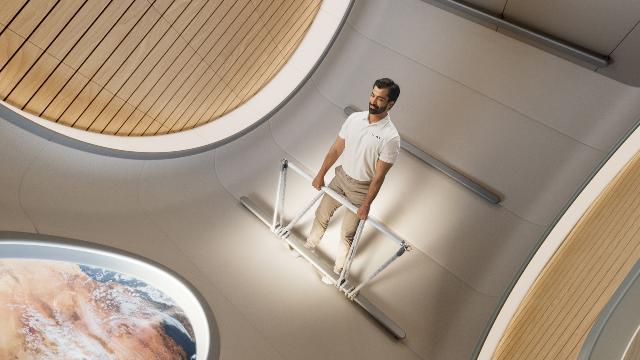The developers promised to deploy a full-fledged multi-component structure in orbit by the time of the planned flooding of the International Space Station, that is, in the next few years.
The decommissioning of the ISS and flooding in the Pacific Ocean are scheduled for 2030-2031. NASA obviously decided to complete this difficult task on their own, without the help of Russian Progress space trucks. SpaceX was given the task to create a special ship for this purpose with a sufficient supply of fuel.
What will happen next? Russia intends to build its own station, and the United States has come to the conclusion that it is worth continuing the manned program in low-Earth orbit on a commercial basis. NASA has announced a competition for the best offer, and recently the private company VAST presented its version of the ISS replacement at the International Astronautical Congress in Milan.
The new station was named Haven-2. Its predecessor Haven-1 is going to be sent into space in 2025 on a Falcon 9 rocket, and it will be just one module ten meters long and 3.8 meters wide. Crews will fly to it on the Crew Dragon ship, which will be able to stay docked for up to 30 days.

The planned single-module Haven-1 station with the Crew Dragon ship docked to it (artistic image) / © VAST
Haven-2 is already a multi—module design, with each module being five meters longer than Haven-1. For comparison, the dimensions of the Harmony module on the ISS are seven and 4.4 meters in diameter, the Zarya module is 12.56 and 4.11 meters.
Perhaps the most spectacular external feature of the new commercial modules is the domed windows with a width of more than a meter each. There will also be a large viewing space with a diameter of 3.8 meters.
They also provided a robotic arm for carrying out and attaching instruments and other payloads to the module so that astronauts would not have to go into outer space once again. Inside the modules there is a wooden finish. By the way, the interior was created under the guidance of the famous designer Peter Russell-Clark, who worked for Apple for 20 years.

Interior design of the Haven-2 private space station / © VAST
The developers of Haven-2 assured that if they win the competition and receive a contract in 2026, the first module will be ready for launch in two years. Next, the plan is to send three more exactly the same modules into orbit. First, they will connect in a "string", then the central, nodal module will fly to them, and the rest will line up around it. In this form, the station is promised by the beginning of the next decade.
I must say, the project will strongly depend on the timing of further tests of the superheavy rocket and the Starship ship: it is this space system that should deliver the main module. The rest will be launched on a Falcon Heavy. The parameters of the orbit of the future station are not mentioned, but private traders are not inclined to experiment in this regard and by default they focus on the ISS: the altitude is about 400 kilometers, the inclination is 51.6 degrees.
It is worth adding that the shown interior of the station has already caused a skeptical reaction from a number of industry observers. The handrails and pockets, which can be hooked with your feet, are very different in design from those on the ISS. This means that you will have to cling to them with two legs in order to be able to do something with your hands. Besides, there are fewer of them. This reduces the convenience of the station.
In addition, the simulator concept shown in the renderings looks strange: it does not have a separate platform with foot hooks, like the bicycle ergometer on the ISS. Without such a fixation, you can fly out of the simulator in zero gravity even with a small error, and at a speed that is potentially traumatic.
Thanks for the tip -off to readers from our "Community".

